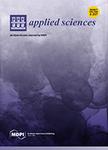版权所有:内蒙古大学图书馆 技术提供:维普资讯• 智图
内蒙古自治区呼和浩特市赛罕区大学西街235号 邮编: 010021

作者机构:Bitlis Eren Univ Adilcevaz Vocat Sch Dept Comp Programming TR-13000 Bitlis Turkiye Firat Univ Fac Technol Dept Software Engn TR-23119 Elazig Turkiye
出 版 物:《APPLIED SCIENCES-BASEL》 (Appl. Sci.)
年 卷 期:2025年第15卷第1期
核心收录:
主 题:deep learning machine learning cheating academic integrity online examination
摘 要:Featured Application The proposed model can contribute to the field in revealing the best performance with the least error rate in deep learning and machine learning applications. It can be useful in classifying and detecting unethical behavior patterns in online distance education *** This study aims to identify the best deep learning and machine learning models to identify the unethical behavior patterns of learners using distance education exam data of an educational institution. One hundred twenty-nine online exam data were analyzed by the researcher with three different scenarios to reveal the best model performance in regression and classification. For regression and classification, deep neural network (DNN) from deep learning algorithms and support vector machine (SVM), decision trees (DTs), k-nearest neighbor (KNN), random forest (RF), logistic regression (LR), and extreme gradient boosting (XGBoost) algorithms from machine learning algorithms were used. In the regression analysis conducted within the scope of Scenario-1, the model we proposed to detect cheating behavior, which is one of the unethical learner behaviors, was found to be a 5-layer DNN model with a test performance success of 80.9%. In the binary classification analysis for Scenario-2, students who copied from unethical behaviors were obtained with an accuracy rate of 96.9% by the model established by the 10-layer DNN algorithm we proposed. In the triple classification analysis for Scenario-3 defined in the study, the XGBoost model was found to have the highest accuracy rate of 97.7% for students who cheated due to unethical behaviors and the highest performance in all other metric values. In addition, SHAP and LIME methods, which are explanatory methods for the XGBoost model, which is one of the best-performing models, were applied, and the attributes and percentages affecting the model were shared. As a result of this study, it has been shown that the application of the most